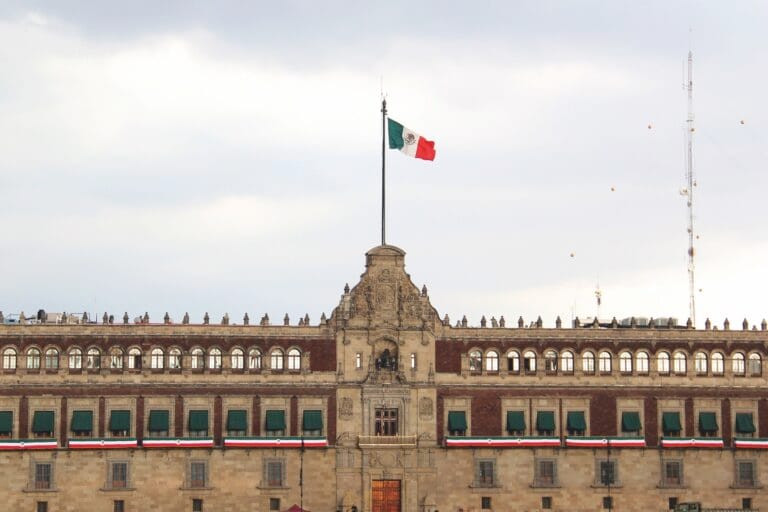From the industrial zones of Querétaro to the cargo ramps of Monterrey and Tijuana, Mexico’s airfreight industry is entering a key inflection point. Fuelled by nearshoring, deepening trade links with the United States and Canada, and a shift towards higher-value goods, Mexico’s air cargo lanes have become foundational to the Americas’ logistics map. But with that momentum come infrastructure, policy, and capacity challenges that will determine whether this moment becomes a breakthrough, or a bottleneck.
Nearshoring and trade shifts
Mexico’s logistics rise is linked to a broader reshuffling of global supply chains. As companies reposition manufacturing closer to North American markets, Mexico has emerged as a key beneficiary. According to BBVA Research, manufacturing goods accounted for nearly 90 percent of Mexico’s exports in the first half of 2025, and the US alone absorbed 83.3 percent of those exports.
In 2024, bilateral goods trade between Mexico and the US was estimated at approximately US$840 billion. That volume underscores the strategic importance of airfreight, especially for time-sensitive sectors such as electronics, aerospace parts, pharmaceuticals and automotive assemblies.
Mexico is now positioning itself as a logistics gateway. The combination of proximity to the US, trade advantages under USMCA and near-shoring momentum away from Asia has boosted Mexico’s status in hemispheric supply chains.
Airport landscape: beyond Mexico City
Mexico’s air-cargo ecosystem is evolving, but not without its growing pains. One of the most consequential moves has been the relocation of dedicated freighter operations from Mexico City International Airport (MEX) to Felipe Ángeles International Airport (AIFA). Recent reporting indicates that whilst MEX recorded tonnage growth in early 2025, AIFA saw significant declines.
The relocation aims to free up capacity at MEX and turn AIFA into a freight-centric hub, but forwarders and carriers say adoption and access are still playing catch up due to slot allocation, customs operations and ground-handling infrastructure not yet fully mature.
Meanwhile, regional airports are also gaining ground. Airports such as Querétaro, Monterrey, Guadalajara and Tijuana are increasingly important for manufacturing centres and e-commerce fulfilment hubs. Querétaro has become a significant aerospace logistics node servicing parts bound for both North America and Europe.
Carriers and integrators
Domestic freighter operators including Mas Air, AeroUnion and Estafeta are modernising fleets and expanding routes. Mas Air has added A330 freighters and expanded into the U.S. and South America. Global integrators such as DHL Express, FedEx Corporation and UPS are investing in Mexican hub facilities to capture rising cross-border demand.
Mexico’s air-cargo market is projected to see double-digit growth over the coming decade, driven by near-shoring and e-commerce. However, operational data from the Agencia Federal de Aviación Civil (AFAC) show that cargo volume in H1 2025 fell by 5.2 PERCENT compared with H1 2024. Total tonnage handled at Mexican airports reached 588,461 metric tonnes, down from 620,483 tonnes the previous year.
This contrast, the high growth outlook but short-term dips, reflects the fact that demand is strong but infrastructure and regulatory constraints are holding back momentum.
Policy and infrastructure hurdles
Turning Mexico into the Americas’ cargo hub requires more than adding aircraft and warehouses. The Mexican Institute of Transport has flagged lack of multimodal integration, road, rail and air linkages, as a major bottleneck.
Airport governance shifts, including more military oversight at AIFA and slot-management policy changes, have created some uncertainty for carriers. Trade-policy and tariff risks only add more friction. Logistics professionals highlight the need for deeper customs digitalisation, more ground-handling capacity and clearer regulatory frameworks.
Sustainability and digitalisation
Mexico still currently lacks a national roadmap for Sustainable Aviation Fuel (SAF) or carbon-reporting standards. However, international shippers are increasingly demanding accountability. Meanwhile, digitalisation is gaining traction: adoption of electronic-air waybill (e-AWB) systems, AI-enabled tracking and analytics platforms is expanding across carriers and third-party logistics providers.
In a logistics era that’s defined by data as much as cargo space, Mexico’s advantage may increasingly lie in information flows as much as flight flows.
US and Canada: partners and corridor enablers
Mexico’s air-cargo rise cannot be separated from its northern trade partners. The U.S. remains Mexico’s dominant air-trade gateway: bilateral trade flows exceed us$800 billion annually.
Canada, whilst smaller in scale, plays an important role through trilateral supply-chain links under the USMCA.
For Mexican airfreight operators, southern US gateway airports like Miami, Dallas/Fort Worth, Los Angeles and Houston are crucial. Yet bilateral aviation politics remain a wildcard. New U..restrictions on Mexican carriers could complicate cargo flows and airline partnerships. Mexico’s logistical competitiveness depends on how well it aligns with US and Canadian standards.
Outlook
Mexican airfreight stands at an extraordinary juncture. The intersecting trends of nearshoring, regional trade integration, and rising volumes of high-value time-sensitive goods suggest that demand will continue to climb. But opportunity must be matched with performance. Mexico needs to focus on four key areas:
• Expanding airport and ground-handling capacity to keep pace with demand
• Deepening digitalisation and visibility in cargo operations
• Strengthening regulatory and institutional frameworks
• Sustaining alignment with US and Canadian logistics corridors to ensure seamless access to the world’s largest consumer market.
If Mexico can deliver on these fronts, it may very well define the nearshoring era. For airfreight professionals, logistics operators and shippers alike, that’s a story worth watching.




